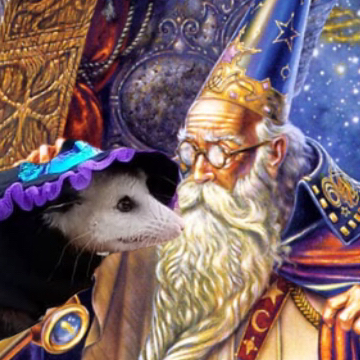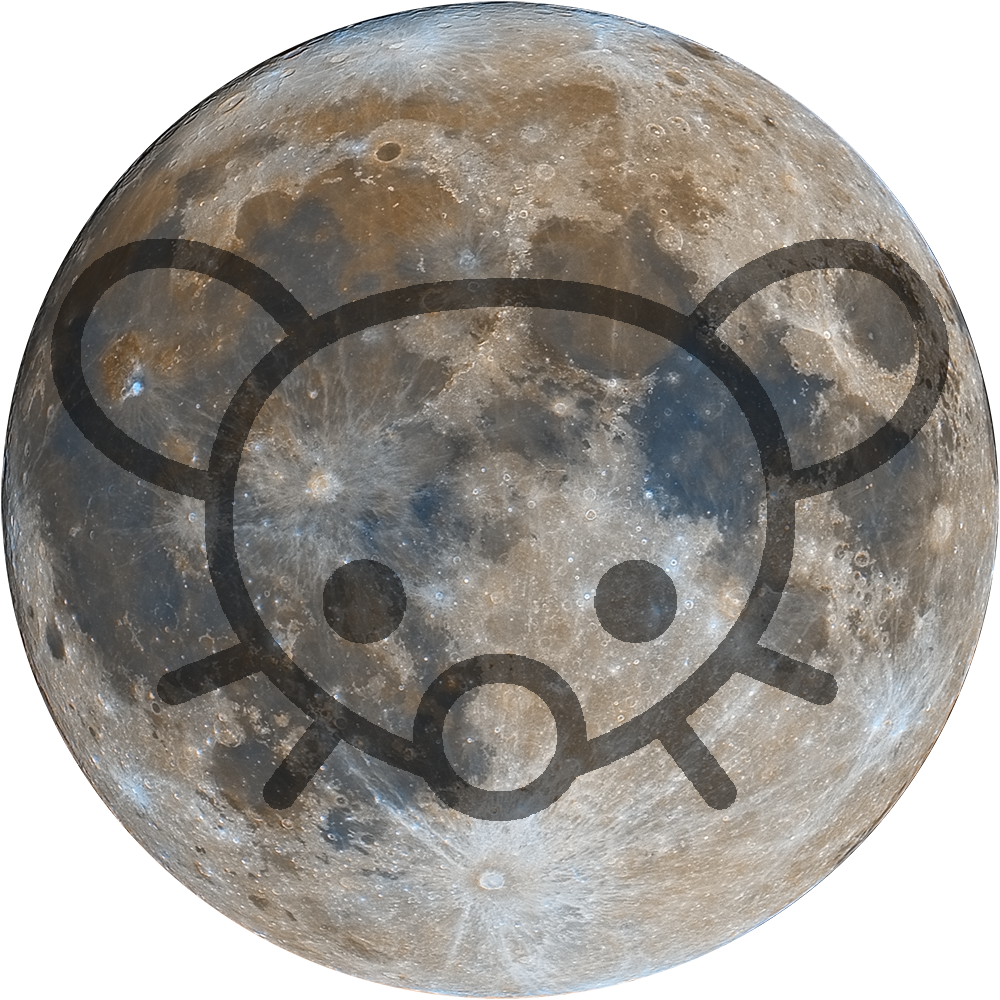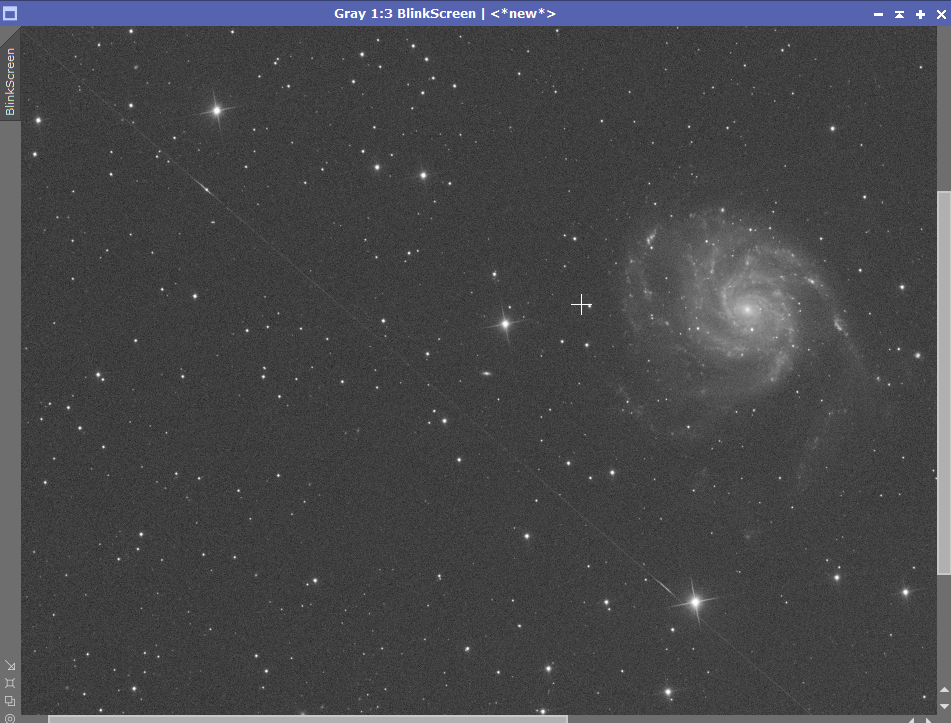- 22 Posts
- 14 Comments
It’s an artifact from the camera. The ASI1600 has microlenses over each pixel on the sensor, which makes this pattern around bright stars
The Horsehead Nebula is a dark nebula about 1400ly away from us in the constellation Orion. The Bright star near it is Alnitak, and it one of the stars that makes up Orion’s Belt. Because this is one of the brightest stars that people photograph when shooting DSOs, it often can result in unwanted halos, which are present in my RGB filters. I was able to edit the halos out to a level I felt was acceptable (see processing info below), however there still is some color fringing/artifacts on the edge of the halos. Also the bottom left of Alnitak is the Flame Nebula, which is just a nebula that happens to be in the foreground to the horsehead. Captured over 5 nights from February 14-20, 2022 from my Bortle 6 driveway.
Places where I host my other images:
-
TPO 6" F/4 Imaging Newtonian
-
Orion Sirius EQ-G
-
ZWO ASI1600MM-Pro
-
Skywatcher Quattro Coma Corrector
-
ZWO EFW 8x1.25"/31mm
-
Astronomik LRGB+CLS Filters- 31mm
-
Astrodon 31mm Ha 5nm, Oiii 3nm, Sii 5nm
-
Agena 50mm Deluxe Straight-Through Guide Scope
-
ZWO ASI-120mc for guiding
-
Moonlite Autofocuser
Acquisition: 12 hours 6 minutes (Camera at Unity Gain, -20°C)
-
Lum- 251x60"
-
Ha- 67x300"
-
Red- 33x90"
-
Green- 31x60"
-
Blue- 29x60"
-
Darks- 30
-
Flats- 30 per filter
Capture Software:
- Captured using N.I.N.A. and PHD2 for guiding and dithering.
PixInsight Processing:
-
BatchPreProcessing
-
SubframeSelector
-
StarAlignment
-
ImageIntegration
-
DrizzleIntegration (2x, Var β=1.5)
Linear:
-
DynamicCrop
-
Automatic and Dynamic Background extractions
RGB:
-
ChannelCombination to map monochrome R, G, and B images into a color image
-
PhotometricColorCalibration
-
Slight SCNR green
-
HSV repair
-
ArcsinhStretch + HistogramTransformation to bring nonlinear
Luminance:
- PixelMath to combine Ha and luminance stacks to make super-luminance image (to be used as the luminance layer going forward)
0.7*Ha + 0.3*Lum
-
EZ Decon
-
NoiseXTerminator
-
ArcsinhStretch + HistogramTransformation to bring nonlinear
Nonlinear:
-
Created two circle masks per this guide. SCNR + curve tweaks to mitigate the halos from my RGB filters
-
LRGBCombination with SuperLum
-
Ungodly amounts of curve transformations to further mitigate the halos, as well as just general curves for lightness, saturation, contrast, hues, etc.
-
ColorSaturation
-
Extract L > LRGBCombination for chrominance noise reduction
-
LocalHistogramEqualization
-
EZ Star reduction
-
NoiseGenerator to add noise into reduced star areas
-
another round of LHE
-
more curves
-
CloneStamp to remove a couple of weirdly artifacted stars
-
even more curves
-
Resample to 60%
-
Annotation
-
If you’re going into deep sky imaging, getting a solid tracking mount will be more important than a specific camera/lens. I’ll be honest I haven’t really bought new gear or looked at new equipment in the last few years, but this vid from Alaskan Astro is a great overview and recommendations for beginner setup (I see the 135mm f/2 has already been recommended in here lol). It’s also worth checking out used equipment if you’re on a budget. I’ve found some great deals on the cloudynights classifieds, craigslist, and FB marketplace when I was assembling my rig.
Also since you want to use your camera for astro and normal photography, you can still use a H-alpha modded camera, but just use a custom white balance for non-astro shots. Personally I wouldn’t worry too much about getting a modded cam if you’re just starting out in the hobby, but it’s something you may want to consider if you want to shoot a lot of emission nebulae

 3·25 days ago
3·25 days agowith my luck it’s gonna pop in november just after it sinks behind some trees for the season

 18·25 days ago
18·25 days agoI made this comparison a while ago, and figured I’d share it since I’ve seen some headlines going around the last couple days…
The Moon’s orbit isn’t a perfect circle, and at times is a little closer and a little farther away from Earth. It’s called a supermoon when the moon is full and at its closest point, and a micromoon when its full and at its furthest point
I wanted to make this comparison to highlight that the supermoon isn’t really that much larger than normal. Personally I think the supermoon is overhyped for what it is, and that it’s hard to tell visually that the moon is larger or smaller, unless you do a direct comparison like this. The moon can appear larger than normal when its close to the horizon, but the actual size of it is no different than if it was straight overhead: https://en.wikipedia.org/wiki/Moon_illusion
The angular diameters and distances were taken from a planetarium program called Stellarium. I compared the pixel measurements of my photos to the values calculated by Stellarium, and the discrepancy was only 0.22%.
-
TPO 6" F/4 Imaging Newtonian
-
ZWO ASI1600MM-Pro
-
Skywatcher Quattro Coma Corrector
-
ZWO EFW 8x1.25"/31mm
-
Astronomik LRGB+CLS Filters- 31mm
-
Moonlite Autofocuser
Acquisition: (Camera at Unity Gain, -20°C for supermoon, -10°C for micromoon)
-
Astronomik Red filter used to combat atmospheric seeing
-
Exposure- 0.213ms for supermoon, 1.115ms for micromoon
-
1000 frame capture for supermoon
-
2000 frame capture for micromoon
Capture Software:
- Captured using Sharpcap and N.I.N.A. for filterwheel and focuser control
Processing:
-
Supermoon: Best 10% of frames stacked in Autostakkert!3
-
Micromoon: Best 25% of frames stacked
-
Registax Wavelets for sharpening on both images
-
Level and curve adjustments in Photoshop
-
Images combined and annotated in Photoshop
-
It may not be as big or well known as the other well known cluster in Hercules (M13), but it sure looks nice. Captured over 4 nights in July/August 2024 from a Bortle 9 zone
Places where I host my other images:
-
TPO 6" F/4 Imaging Newtonian
-
Orion Sirius EQ-G
-
ZWO ASI1600MM-Pro
-
Skywatcher Quattro Coma Corrector
-
ZWO EFW 8x1.25"/31mm
-
Astronomik LRGB+CLS Filters- 31mm
-
Astrodon 31mm Ha 5nm, Oiii 3nm, Sii 5nm
-
Agena 50mm Deluxe Straight-Through Guide Scope
-
ZWO ASI-120MC for guiding
-
Moonlite Autofocuser
Acquisition: 6 hours 55 minutes (Camera at half Unity Gain, -15°C)
-
Lum - 209x60"
-
Red - 78x60"
-
Green - 62x60"
-
Blue - 66x60"
-
Flats- 30 per filter
-
24 JimmyFlats per filter
Capture Software:
- Captured using N.I.N.A.
PixInsight Processing:
-
BatchPreProcessing (with premade JimmyFlats)
-
StarAlignment
-
ImageIntegration
-
DrizzleIntegration (2x, Var β=1.5)
-
DynamicCrop
-
DynamicBackgroundExtraction
duplicated each image and removed stars via StarXterminator. Ran DBE with a shitload of points to generate background model. model subtracted from original pic using the following PixelMath (math courtesy of /u/jimmythechicken1)
$T * med(model) / model
Luminance:
-
BlurXTerminator (correct only mode)
-
ArcsinhStretch + histogramtransformation to bring nonlinear
RGB:
-
ChannelCombinaiton to combine monochrome R, G, B stacks into color image
-
BlurXTerminator (correct only mode)
-
SpectroPhotometricColorCalibration
-
HSV Repair
-
ArcsinhStretch + histogramtransformation to bring nonlinear
-
Curves to saturate it a little
-
MLT for large scale chrominance noise reduction
Nonlinear:
-
LRGBCombination with stretched L as luminance
-
DeepSNR Noise reduction
-
Several CurveTransformations to adjust lightness, contrast, colors, saturation, etc.
-
Invert > SCNR > invert > SCNR to remove some greens and magentas
-
More curves
-
A little bit of noiseXterminator
-
DynamicCrop in on the clustert
-
Resample to 75%
-
Annotation
-

 4·1 month ago
4·1 month agoI originally planned on shooting this from a dark site on top of a mountain but my laptop had other plans. Ended up taking this from my driveway instead (at least when I still had a driveway), but I’m very pleased with the detail I got at just 610mm focal length. There are also a number of other galaxies in the uncropped pic including one over a billion light years away from us (calculated from redshift). This image was taken with a monochrome camera through filters for luminance (all visible light), red, green, blue, and Hydrogen-alpha (656nm), which were combined into a color image. The Hydrogen-alpha was combined with red (described below) to enhance the hydrogen nebulae in the galaxy (red splotches in the spiral arms). Captured on March 21, 22, 24, and 29th, 2021 from a Bortle 6 zone
Places where I host my other images:
-
TPO 6" F/4 Imaging Newtonian
-
Orion Sirius EQ-G
-
ZWO ASI1600MM-Pro
-
Skywatcher Quattro Coma Corrector
-
ZWO EFW 8x1.25"/31mm
-
Astronomik LRGB+CLS Filters- 31mm
-
Astrodon 31mm Ha 5nm, Oiii 3nm, Sii 5nm
-
Agena 50mm Deluxe Straight-Through Guide Scope
-
ZWO ASI-120MC for guiding
-
Moonlite Autofocuser
Acquisition: 10 hours 2 minutes (Camera at Unity Gain, -15°C)
-
Lum - 106x120"
-
Ha - 30x300"
-
Red - 40x120"
-
Green - 40x120"
-
Blue - 50x120"
-
Darks- 30
-
Flats- 30 per filter
Capture Software:
- Captured using N.I.N.A. and PHD2 for guiding and dithering.
PixInsight Processing:
-
BatchPreProcessing
-
StarAlignment
-
ImageIntegration
-
DrizzleIntegration (2x, Var β=1.5) (Lum only)
-
StarAlign Ha, R, G, B stacks to drizzled L
-
DynamicCrop
-
DynamicBackgroundExtraction
Luminance:
-
EZ Decon + Denoise
-
ArcsinhStretch + histogramtransformation to bring nonlinear
RGB:
-
ChannelCombinaiton to combine monochrome R, G, B stacks into color image
-
PhotometricColorCalibration
-
SCNR green
Adding Ha:
I followed this tutorial which I find produces much better results than my previous NBRGBCombination script technique:
http://www.arciereceleste.it/tutorial-pixinsight/cat-tutorial-eng/85-enhance-galaxy-ha-eng
- PixelMath to make Clean Ha. This effectively isolates just the Ha from the red continuum spectrum
Ha-Q * (Red-med (Red))
Q=1.0416
-
PixelMath to combine Clean Ha
-
PixelMath to add Ha to RGB image ($T)
R= $T+B*(Ha_Clean - med(Ha_Clean))
G= $T
B= $T+B*0.2*(Ha_Clean - med(Ha_Clean))
B=3
HaRGB:
-
Slight SCNR
-
HSV Repair
-
ArcsinhStretch + histogramtransformation to bring nonlinear
-
ColorSaturation to slightly desaturate Ha regions
-
HistogramTransformation to further stretch to match lum brightness
Nonlinear:
-
LRGBCombination with stretched L as luminance
-
Several CurveTransformations to adjust lightness, contrast, colors, saturation, etc.
-
MoreSCNR
-
ACDNR
-
LocalHistogramEqualization
-
More Curves
-
ColorSaturation to slightly desaturate Ha regions
-
MMT noise reduction
-
EZ StarReduction
-
Final Curves
-
Resample to 60%
-
DynamicCrop to 3555x2000
-
Annotation
-

 2·1 month ago
2·1 month agoIt looks like walking/raining noise, and it’s usually caused by not dithering. On a lot of setups you dither every few exposures by moving the scope a few pixels in a random direction, and when everything is realigned and stacked, it should remove the noise.
I’m not that familiar with smart telescopes, but see if it has a dither function built in. On more typical rigs you’d dither by moving a guide star over, and I think NINA can just blindly slew a mount a few arcseconds if there’s no guider attached.
The satellites are normally dim, but sometimes the sun will hit them at just the right angle and reflect perfectly to you.
https://en.wikipedia.org/wiki/File%3AFlare_Simulation.gif
The old Iridium sats were cool because they could get to -9 magnitude for a few seconds if you were in just the right spot. You can also have some satellites that flare every few seconds if they’re tumbling and keep hitting the sun at the right angle throughout the pass.

Honestly kinda looks more like a satellite flare with how symmetric it is.
btw, was any processing done to this?

 1·2 months ago
1·2 months agoNGC 5634 is a globular cluster about 80k lightyears away from us. It’s pretty small compared to other globs like M13. I only spent an hour on this while waiting for other targets to come up the last time I was at a dark site. Captured on June 7th, 2024 from a Bortle 3 zone (Deerlick Astronomy Village)
Places where I host my other images:
-
TPO 6" F/4 Imaging Newtonian
-
Orion Sirius EQ-G
-
ZWO ASI1600MM-Pro
-
Skywatcher Quattro Coma Corrector
-
ZWO EFW 8x1.25"/31mm
-
Astronomik LRGB+CLS Filters- 31mm
-
Astrodon 31mm Ha 5nm, Oiii 3nm, Sii 5nm
-
Agena 50mm Deluxe Straight-Through Guide Scope
-
ZWO ASI-120MC for guiding
-
Moonlite Autofocuser
Acquisition: 1hour 3 minutes (Camera at half Unity Gain, -15°C)
-
Lum - 24x90"
-
Red - 6x90"
-
Green - 6x90"
-
Blue - 6x90"
-
Flats- 30 per filter
Capture Software:
- Captured using N.I.N.A.
PixInsight Processing:
-
BatchPreProcessing
-
StarAlignment
-
ImageIntegration
-
DrizzleIntegration (2x, Var β=1.5)
-
DynamicCrop
-
DynamicBackgroundExtraction
duplicated each image and removed stars via StarXterminator. Ran DBE with a shitload of points to generate background model. model subtracted from original pic using the following PixelMath (math courtesy of /u/jimmythechicken1)
$T * med(model) / model
Luminance:
-
BlurXTerminator (correct only mode)
-
ArcsinhStretch + histogramtransformation to bring nonlinear
RGB:
-
ChannelCombinaiton to combine monochrome R, G, B stacks into color image
-
BlurXTerminator (correct only mode)
-
SpectroPhotometricColorCalibration
-
HSV Repair
-
ArcsinhStretch + histogramtransformation to bring nonlinear
-
Curves to saturate it a little
Nonlinear:
-
LRGBCombination with stretched L as luminance
-
DeepSNR Noise reduction
-
Invert > SCNR > invert > SCNR to remove some greens and magentas
-
Several CurveTransformations to adjust lightness, contrast, colors, saturation, etc.
-
HistogramTransformations
-
More curves
-
DynamicCrop in on the clustert
-
Resample to 80%
-
Annotation
-

 691·2 months ago
691·2 months agoBye, Bob :-(


NGC 4490 is a galaxy colliding with the smaller NGC 4485 galaxy, and both are about 25 million light years away. This image was taken with a monochrome camera through filters for luminance (all visible light), red, green, blue, and Hydrogen-alpha (656nm), which were combined into a color image. The Hydrogen-alpha was combined with red (described below) to make the HaLRGB image. The pink Ha regions are star forming nebulae within the galaxies. This got cropped out of the final pic, but I ended getting some gorgeous diffraction spikes on this star near the edge of the full FOV
Places where I host my other images:
Flickr | Instagram
Equipment:
TPO 6" F/4 Imaging Newtonian
Orion Sirius EQ-G
ZWO ASI1600MM-Pro
Skywatcher Quattro Coma Corrector
ZWO EFW 8x1.25"/31mm
Astronomik LRGB+CLS Filters- 31mm
Astrodon 31mm Ha 5nm, Oiii 3nm, Sii 5nm
Agena 50mm Deluxe Straight-Through Guide Scope
ZWO ASI-120MC for guiding
Moonlite Autofocuser
Acquisition: 27 hours 37 minutes (Camera at half Unity Gain, -15°C)
Ha - 128x360"
Lum - 464x60"
Red - 152x60"
Green - 150x60"
Blue - 123x60"
Flats- 30 per filter
24 JimmyFlats per broadband filter
Capture Software:
PixInsight Processing:
BatchPreProcessing (with premade JimmyFlats)
StarAlignment
Blink
ImageIntegration
DrizzleIntegration (2x, Var β=1.5)
DynamicCrop
DynamicBackgroundExtraction
Luminance:
BlurXTerminator
ArcsinhStretch + histogramtransformation to bring nonlinear
RGB:
ChannelCombinaiton to combine monochrome R, G, B stacks into color image
SpectroPhotometricColorCalibration
BlurXTerminator (correct only mode)
HSV Repair
making clean Ha
Nonlinear
ArcsinhStretch + histogramtransformation to bring HaRGB image nonlinear
MLT for large scale chrominance noise reduction
shitloads of curve transformations to adjust lightness, contrast, saturation, etc (with various luminance and star masks)
slight SCNR to remove some greens
LRGBCombination with stretched Luminance
DeepSNR
more curves
ColorSaturation to slightly desaturate the Ha regions (they were very pink compared to the rest of the galaxy
slight noisexterminator
LocalHistogramEqualization
even more curves
Resample to 75%
DynamicCrop onto just the galaxy
annotation